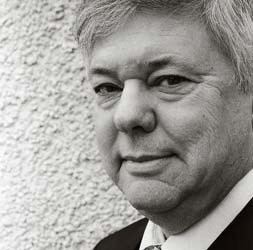Nationality United States Fields Biology Name Michael Brown | Children two Spouse Alice Lapin (m. 1964) | |
 | ||
Born Michael Stuart Brown April 13, 1941 (age 84) Brooklyn, New York, USA ( 1941-04-13 ) Alma mater University of PennsylvaniaUniversity of Pennsylvania School of Medicine Notable awards Heinrich Wieland Prize (1974)Richard Lounsbery Award (1979)William Allan Award (1985)Nobel Prize in Physiology or Medicine (1985)National Medal of Science (1988)ForMemRS (1991) Similar People Joseph L Goldstein, Konrad Emil Bloch, Feodor Felix Konrad L, Barbara McClintock | ||
Michael Stuart Brown | Wikipedia audio article
Michael Stuart Brown (born April 13, 1941) is an American geneticist and Nobel laureate. He was awarded the Nobel Prize in Physiology or Medicine with Joseph L. Goldstein in 1985 for describing the regulation of cholesterol metabolism.
Contents
- Michael Stuart Brown Wikipedia audio article
- Brown Michael Stuart Medical Definition and Pronunciation
- Education and early life
- Career and research
- Awards and honors
- References

Brown, Michael Stuart - Medical Definition and Pronunciation
Education and early life
Brown was born in Brooklyn, New York, the son of Evelyn, a homemaker, and Harvey Brown, a textile salesman. Graduated from Cheltenham High School (Wyncote, PA). Brown graduated from the University of Pennsylvania in 1962 and received his M.D. from the University of Pennsylvania School of Medicine in 1966.
Career and research
Moving to the University of Texas Health Science Center in Dallas, now the UT Southwestern Medical Center, Brown and colleague Joseph L. Goldstein researched cholesterol metabolism and discovered that human cells have low-density lipoprotein (LDL) receptors that extract cholesterol from the bloodstream. The lack of sufficient LDL receptors is implicated in familial hypercholesterolemia, which predisposes heavily for cholesterol-related diseases. In addition to explaining the underlying pathology of this disease, their work uncovered a fundamental aspect of cell biology - Receptor-mediated endocytosis.
Their findings led to the development of statin drugs, the cholesterol-lowering compounds that today are used by 16 million Americans and are the most widely prescribed medications in the United States. Their discoveries are improving more lives every year, both in the United States and around the world[needs citation]. New federal cholesterol guidelines will triple the number of Americans taking statin drugs to lower their cholesterol, reducing the risk of heart disease and stroke for countless people. Following these important advances, their team of dedicated researchers elucidated the role of lipid modification of proteins (protein prenylation) in cancer. In 1984 he was awarded the Louisa Gross Horwitz Prize from Columbia University together with Joseph L. Goldstein (Co-recipient of 1985 Nobel Prize in Physiology or Medicine). In 1988, Brown received National Medal of Science for his contributions to the world of Medicine.
In 1993, their trainees Xiaodong Wang and Michael Briggs purified the Sterol regulatory element binding proteins (SREBPs). Since 1993, Drs. Brown, Goldstein, and their colleagues have described the unexpectedly complex machinery by which cells maintain the necessary levels of fats and cholesterol in the face of varying environmental circumstances. Dr. Brown holds The W. A. (Monty) Moncrief Distinguished Chair in Cholesterol and Arteriosclerosis Research; is a Regental Professor of the University of Texas; holds the Paul J. Thomas Chair in Medicine; and is a member of the Board of Scientific Directors at The Scripps Research Institute. Frequently mentioned as a candidate for nationally-prominent positions in scientific administration, Dr. Brown, like his colleague Joseph L. Goldstein, elects to continue hands-on involvement with research, leading a research team that typically includes a dozen doctoral and postdoctoral trainees. He and his colleague are among the most highly cited scientists in the world.
Brown is also on the prestigious Prix Galien USA Committee that "recognizes the technical, scientific and clinical research skills necessary to develop innovative medicines". The inauguration of the Prix Galien in the US, the equivalent of the Nobel Prize in this field, was in September 2007, and the winners were selected by a preeminent scientific and learned committee that included 7 Nobel laureates, of which Brown was one.
Awards and honors
Brown has won numerous awards and honors including:
